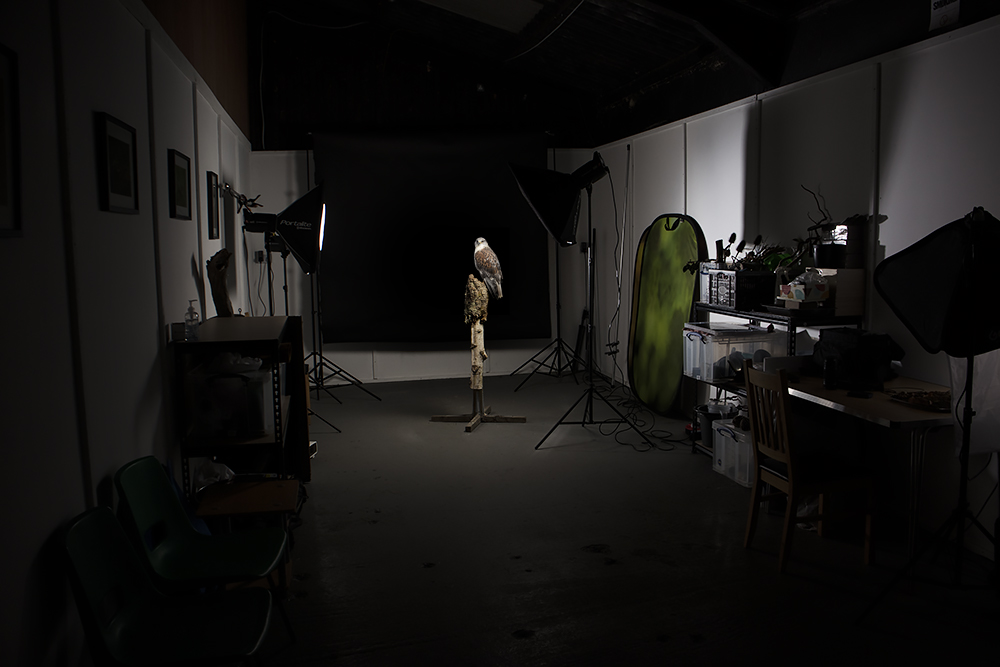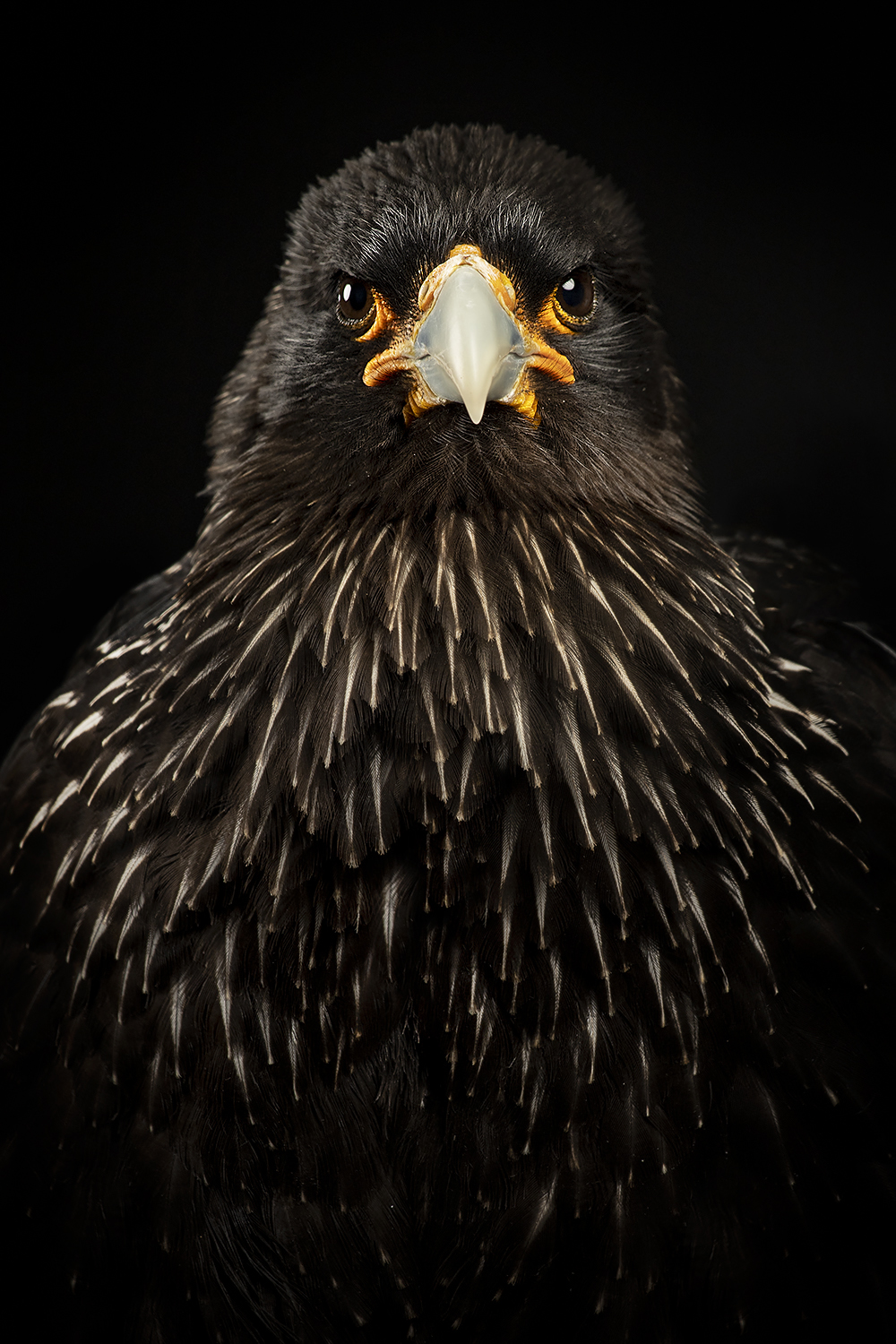Studio Flash Frequently Asked Questions
Why do we use Studio Flash lights for some of our days?
A few years ago we only provided out-door photo days, which are of course subject to the weather – and one day found ourselves having to cancel a Raptors In The Forest day on the day when the weather forecast got it totally wrong. Some of our clients had travelled a long way to be there and we just happened to have all the studio gear in the car so we set it up and had a great day inside the barn photographing a variety of birds under the lights. It was fun, fascinating and the results were stunning, so we decided to do it on a regular basis, later adding more days such as our Reptiles and Harvest Mouse days to the mix. We can control the light using various reflectors or a diffuser to make it soft or harsh, we can control the light output and thus choose our aperture setting for depth of field and we can control the direction of the light to give a modelling effect and add depth to the image.
Why use flash?
At the simplest level flash just gives you enough light to take a photo in an environment where there may not be enough ambient light to make a reasonable exposure. A lot of people will happily switch on their flash or add a flash gun as light levels drop so they can still take photos in low light. Studio Flash is a slightly different ball game in that you can absolutely control the light on your subject and choose how it behaves to style the shot and create different effects. Studio lights also give you great consistency so once you are set up the light output remains the same until you change it. With good lighting the results from your camera and lens combination should be the best possible for your set up, so picture quality can also be controlled.

What flash heads do we use?
We generally use the top of the range Elinchrom ELC Pro HD 500 lights which have a very quick recharge cycle time and are very consistent in their output. This means less missed shots, and excellent light quality shot after shot with great reliability. These are our “work horses” for every day use. For more specialist use we also have some ultra fast flash duration Godox Storm 400 II lights which can achieve around 1/35,000th of a second as well as a set of Profoto D2 500 lights. For table top use there is a selection of flash “Speed Lights” available.

Our Studio
I’m just a beginner, is using studio flash very complicated?
Many people start the day looking a bit worried on their first time with flash units but are usually surprised at just how simple it is. Once the camera is set the lighting remains the same through out that session, so all you need to concentrate on is the compositional side. At the beginning of the session we run through the settings you will need, so typically, on a Bird Of Prey Studio Day for example, we will ask you to set your cameras to Manual Exposure, ISO 100, F8 Aperture with a shutter speed of 1/125th second. A quick fine tune after that and that’s it – your camera is set up for the day and all you have to do is focus, compose and press the button. We always have an experienced photographer on hand to help out so if you are having problems you will get help if you want it.
Is 1/125th Shutter Speed too slow? Surely I need much higher than that to avoid motion blur, especially without a tripod?
Although the shutter speed is only 1/125th of a second, what you are actually using to make the exposure is the flash light and the flash duration is typically around the 1/3000th of a second mark, which is pretty quick! So long as you stay below your camera’s maximum “Sync” speed (the speed at which the camera and flash synchronise together is typically around the 1/200 – 1/250th second mark) the shutter speed is relatively irrelevant. If you go above the maximum sync speed you may start to catch the shutter curtain in the picture causing part of the picture to be blacked out. So although your shutter is firing at 1/125th of a second, your exposure is being made in 1/3000th second.

A 5 second Shutter Speed with a 1/35,000th of a second Flash Duration
What is the correct White Balance setting to use with your Studio Lights?
The lights we usually use are set for 5500K – so if you wanted to see the correct colours on your screen you would need to set your camera’s white balance to 5500K. However you could also set it to “Daylight” to get a rough idea without fiddling with the K setting, or just set it to Auto White Balance although this tends to the least accurate! If you shoot in RAW format then it is simple to change the White Balance in software such as Lightroom or most other RAW software when you are processing your images.
How do you know what settings to set the lights up to?
This comes down to experience, so, for example, I know that F8 gives a reasonable depth of field when photographing the birds of prey where as F16 or higher might be used for our macro days to get an increased depth of field. I set the lights at the beginning of the day and tell you what they are set to before you start. You set your cameras to those settings and that’s it … simple!
Can I learn how to set up the lights with you?
Yes, just remember that we have to get there quite early to set up! Typically for a 10 AM start we will begin setting up at around 8.30 AM. If you wish to come along and help us you are welcome! – Just let us know in advance and we will tell you where and when to meet up. Generally each individual light is set up using a Light Meter according to the needs of the day, then checked with a camera.

Striated Caracara in our studio
